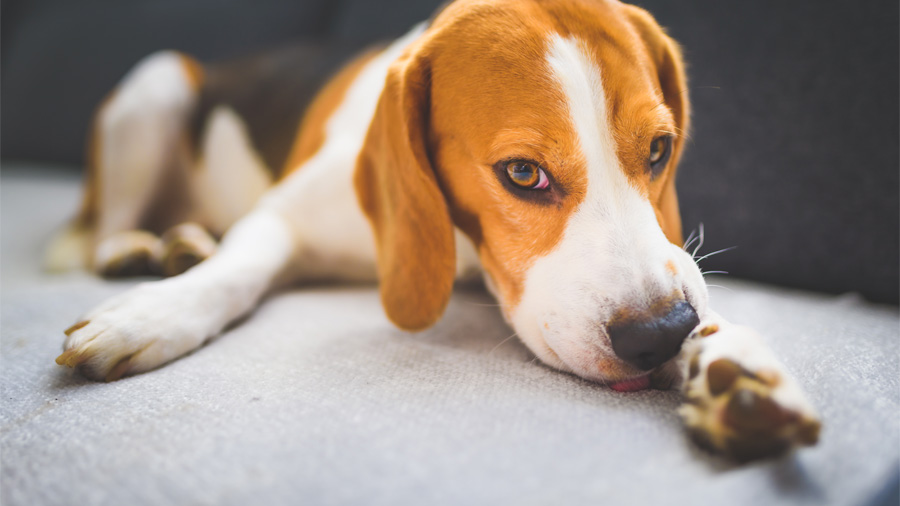Teeth Similar in Structure, Different in Care
Dr. Katherine Kling is a veterinarian who typically sees dogs and cats through the dentistry service at the University of Illinois Veterinary Teaching Hospital in Urbana. Recently Dr. Kling got the chance to use her dentistry skills on some high-profile patients: lions and tigers!
She, along with veterinary specialists, students, and technicians from the Illinois hospital, assisted at one of the twice-yearly visits by the Peter Emily International Veterinary Dental Foundation to the Exotic Feline Rescue Center in Center Point, Ind. The purpose of these visits is to provide dental care to the more than 200 big cats living there, many of whom were rescued from abusive conditions and have lion-sized toothaches. (That a crew from CBS News was filming a story on the dental visit made the experience even more exciting for Dr. Kling and the three dozen other people working to deliver dental care.)
Surprisingly, feline teeth are not very different in structure, whether they reside in the mouth of a big African lion or a small domestic shorthair. All cats have the same number, shape, and arrangement of teeth.
When it comes to the purpose and delivery of dental care, however, some big differences exist, as Dr. Kling explains.
Dental Examination
A house cat should see a veterinarian every year for a checkup that will include an oral examination. Ordinarily the awake kitty will tolerate having the veterinarian lift her lips to get a look at her teeth. During the appointment, the veterinarian will ask the owner about any concerns or changes in the kitty’s habits.
Exotic cats, on the other hand, cannot be examined without sedation, so rescuers and veterinarians have to perform “hands off” exams and monitoring.
“In an exotic feline rescue, rescuers can notice changes in eating patterns or may witness an injury to a tooth when it happens,” says Dr. Kling. Additionally, cats may receive an oral exam if they have to be sedated for any reason.
Dental Procedures
A veterinarian may recommend a preventive tooth cleaning periodically for the typical house cat, but not so for the exotic feline.
“Traditional prophylaxis, which is cleaning by scaling and polishing the teeth, is often skipped,” says Dr. Kling. “More often, dental care for exotic cats is focused on a specific problem, such as a dead tooth that is causing pain and infection in the mouth.”
![[dental teams work on lion]](https://vetmed.illinois.edu/wp-content/uploads/2021/04/pc-kling-or.jpg)
When domestic cats have a fractured or infected tooth, extraction is often the preferred treatment. These cats have small teeth, and thus small roots. They also have doting owners who are able to care for them post-operatively. Owners are instructed to feed soft food and prevent their pet from chewing on toys for a couple weeks following the extraction.
Extractions aren’t very practical in big cats. Instead, root canal procedures are the treatment of choice, because these cats need their teeth for tearing meat. Extraction is a more invasive treatment than a root canal, and extraction requires a longer recovery than a root canal does.
A root canal consists of removing the infected pulp and any debris at the center of the tooth, carefully cleaning the interior, then filling and sealing the tooth. With a root canal, the cat can use the tooth almost immediately afterward, since there is no surgical site to care for.
During Dr. Kling’s visit to the Exotic Feline Rescue Center, one patient, a lion named Jababy, received root canals on all four of his canine teeth. (See photo at the top of the page.) The teeth, which appeared to have been cut or filed down by previous owners, were severely infected, causing the lion excruciating pain. All four root canal procedures were performed simultaneously, to limit the amount of time the patient would be under anesthesia.
Tooth Function and Dental Health
Domestic cats are more prone than are big cats to develop periodontal disease, inflammation in the gums around the tooth. One reason for this is that dental disease takes time to develop, and wild cats just do not live long enough to develop dental disease like a domestic cat.
Another reason is because of the difference in the way the cats use their teeth.
“Wild cats are actually using their teeth to tear their meals, while the teeth of domestic cats do not play as integral a role in eating,” explains Dr. Kling.
Big cats that have to rip and tear their food provide some mechanical disruption of plaque on the teeth, which reduces tartar buildup. Domestic cats do not get this type of activity.
“We can try to mimic this mechanical disruption by feeding a hard kibble and brushing the teeth,” recommends Dr. Kling.
Though your house cat may not eat exactly like his wild cousins, your little carnivore will still benefit from the expertise and care of veterinary dentistry. If you have any questions about feline dental procedures, contact your local veterinarian.
By Hannah Beers
Photos by Dr. Ashley Mitek; for more photos from the trip to the Exotic Feline Rescue Center, see our Facebook posts.

![[jababy gets four root canals]](https://vetmed.illinois.edu/wp-content/uploads/2021/04/pc-kling-big-cat-dental.jpg)


